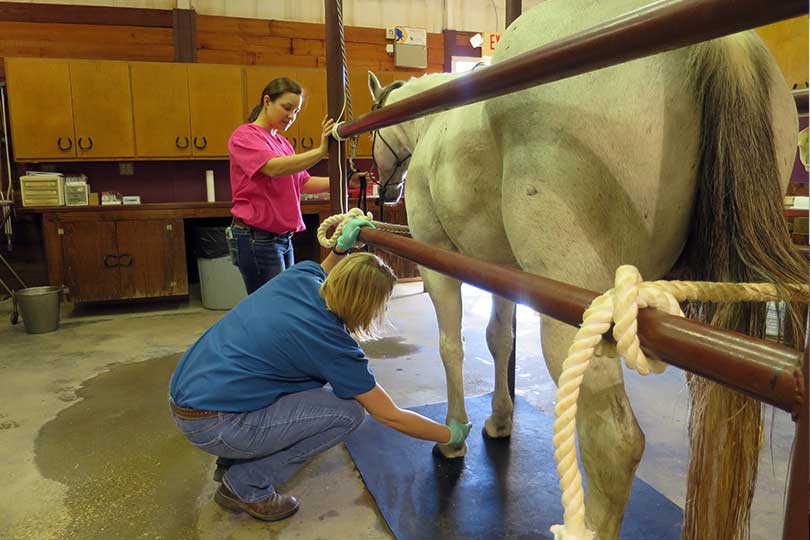By Julie Tomascik
Editor
Animal agriculture is a large part of the Lone Star State, but a shortage of rural veterinarians could put that business at risk.
With fewer veterinary graduates heading to rural areas, many long-time rural veterinarians have no successors. That leaves farmers and ranchers in a tough situation—call a veterinarian who could be hundreds of miles away or solve problems on their own.
To help ease the financial burden on students who seek further experiences and education with food animal species, Texas Farm Bureau (TFB) established the Veterinary Assistance Program in 2013.
“There is a clear need for practitioners in rural areas,” TFB President Russell Boening said. “Veterinary school is expensive. We know that. So to help encourage more students to head into food animal practice after graduation, we developed an assistance program.”
This summer, five students in their second year of veterinary school at Texas A&M University applied and were selected through TFB’s program. They include: Codi Spence, who is interning in Winters and San Saba, Texas; Justin Casares in Ames, Iowa; Tyler Mackey in Dayton and Crockett, Texas; Michael Rauch in Clay Center, Neb.; and Rebecca Gooder in Paris, Texas.
Through the program, veterinary students in their first, second or fourth (final) year of instruction are eligible to apply.
The program helps cover the extra costs incurred during voluntary internships for first- and second-year students and externships that are part of fourth-year students’ curriculum.
The assistance program reimburses expenses for meals, lodging and travel for up to $2,000 while students are away from school but still receiving hands-on education.
“This is an important program to help out at a critical time in their professional training and education,” Boening said. “Hands-on experiences and building relationships with other food animal veterinarians is helpful in their future careers, as well as beneficial for farmers and ranchers across the state.”
Since the program’s implementation, more than $32,000 has been distributed to 26 students who participated in summer internships or externships.
“These students travel near and far to learn from experts in their field and focus on food animal production skills they can bring to their future communities as veterinarians,” Boening said. “They play an important role in our food supply, helping to ensure the correct and safe use of pharmaceutical products and prevent livestock illness.”
Veterinary Assistance Program applications for the fall semester will be made available through Texas A&M University College of Veterinary Medicine’s large animal faculty.


I wish this could go to Texas residents that go to Vet School out of state but that will come back to Texas and work in their hometown or areas they are needed most in Texas. Texas A&M isn’t the only school that has Texas students in vet school and are in need of financial help; but Texas will benefit from their knowledge and love of animals.
That is great, my son will be attending his college freshman year fall 2018 to study pre-vet. Hope the program is still around once he gets to having to complete his internship